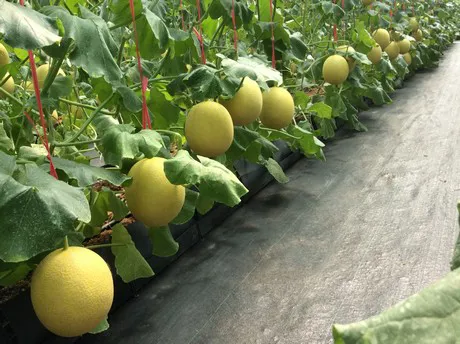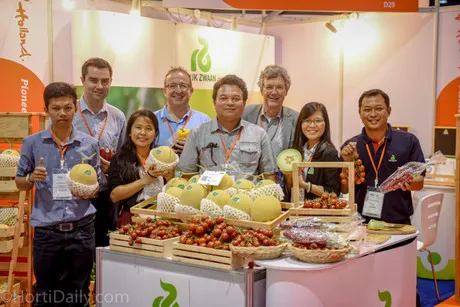"As a result of the increase in wealth, big retail chains are gaining a foothold and are looking for direct suppliers of high quality, special products", said Ahmet Tunali, Area Manager at Rijk Zwaan. They are into direct trade relationships with produce companies, as well as new products and varieties."
The area manager said that for these reasons, there is more demand for produce grown in a protected environment. "Greenhouses have become a standard to grow environmentally friendly with less water and less chemicals. The products can be marketed as a premium since they are of a better and more consistent quality than produce from the open field. This creates new markets, such as the one for hydroponic lettuce. This is growing at a rapid pace, especially in Vietnam, where we have a obtained a large market share with our Salanova and other lettuce varieties."
Bell peppers are another important product category for Rijk Zwaan in Southeast Asia. "In the north of Thailand, in the regions of Chian Mai and Chiang Rai, a lot of green, red, yellow and sometimes orange peppers are grown in greenhouses at altitudes of 400 to 1100 meters. These growers sell directly to retail and skip the so called 'wet market' (Asian wholesale market)."
And then there are the greenhouse grown melons. They are a good example of the possibilities with fresh produce chain management in Asia.

"We gained a lot of experience with the introduction of melons in South America, and since a few years we've been looking at what the odds are in Thailand. In close cooperation with both growers and retailers, we successfully introduced a new type of melon in this market, the Golden Emerald melon. This melon is marketed as a premium product by large retailers and is characterized by its extended shelf life, taste and uniform quality and firmness."
Tunali expects a lot more to come from the Southeast Asian market in the coming years. "It will become very important to select and introduce varieties and complete concepts according to the demand and possibilities within the local market. It is a very promising market with a lot of opportunities for the development of protected crops."

At the Horti Asia trade show in Bangkok last week, Rijk Zwaan was showcasing a selection of their varieties and projects they have recently worked on in Thailand and other Southeast Asian countries.
 For more information:
For more information:Rijk Zwaan
www.rijkzwaan.com
a.tunali@rijkzwaan.nl
